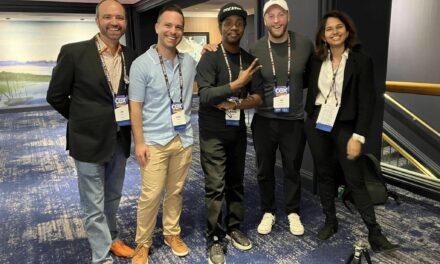On the average weekday, I spend hours sorting through my social media feeds–mostly Facebook and Twitter. I fire up HootSuite to make this task a little easier and dutifully retweet, share, and schedule posts. For many of us, managing social media has gone from a way to kill time to an integral part of our jobs. But by Friday night, I’m ready to hang up my social media hat (except for Pinterest because I need it to make new, exciting meals). On Saturday and Sunday, I need a break from the endless streams of news, opinions, and baby pictures–but giving up social networks all together seems unfeasible.
Social media has fundamentally changed from being something college kids used to cyberstalk their crushes to big business. Lately, though, I’ve been hearing from people with large social media followings–and professional reputations built largely on their social skills–who would love to just throw in the towel and walk away. All you have to do is tune into Jimmy Kimmel Live on a night when he is featuring “Mean Tweets”–where he has celebrities read harsh tweets about themselves on camera-to understand why some people might want to escape the trappings of Twitter. The open, accessible nature of Twitter that made it so popular for connecting with fans (of a celebrity or a brand) has also turned it into a cesspool of insults and bile. Meanwhile, every time we turn around we hear how teens are leaving Facebook in droves, making it the domain of people too old and tired to bother moving their profiles or learn how to use a new app.
I don’t quite believe the hysteria over the supposed exodus of teens from Facebook. Snapchat may be new and exciting, but it is also fundamentally different from Facebook, which has become a content destination as much as a social network. Facebook-along with Pinterest, Twitter, and Instagram–has become an integral part of most publishers’ content strategy (as well as a must-use channels for marketers). Many of those publishers would happily go back to the days when their websites were the destination, but that’s as unlikely as me deleting my Facebook account-or even my Google+ account.
As anyone who has watched as a friend deactivated a social media account–and, sometimes, reactivated it later–knows, social media fatigue is certainly real. According to a 2013 study from Pew Research Center’s Pew Internet & American Life Project, “61% of current Facebook users say that at one time or another in the past they have voluntarily taken a break from using Facebook for a period of several weeks or more.”
Going a step beyond that, the same study found that “20% of the online adults who do not currently use Facebook say they once used the site but no longer do so.” The reasons that 61% of people gave were varied–from a lack of time to engage to “too much drama.” But whatever the reason your potential audience is shunning social media–even temporarily–this is something you have to consider when you’re planning your strategy. You don’t want to become part of the problem.
The good news is that a relatively small number of people (4%) blame ads and spam for their disillusionment. Still, every time someone decides to take a break from any social network–no matter the reason–that means there is one less set of eyeballs for you to reach. If you have a well-rounded, multichannel marketing plan, a few fatigued Facebook users shouldn’t be too big of a deal. That doesn’t mean there isn’t an impact, though, and having a plan for reaching those valuable users outside the realm of social media should be a priority.
As Angie Picardo puts it on Gartner, Inc.’s blog, “People who are getting weary of social media still remain social through the human network. What online marketing often lacks is a sense of authenticity and trust, a contributing reason for social media fatigue. Algorithms cannot compensate for a good local buzz surrounding a new restaurant, or personal testimony from a local celebrity about a specialty hardware store. Spread awareness of your business through traditional means by exalting great customer service and waiting for the trickle down process to bring customers in.”
Can you imagine a world where you didn’t check-in with Facebook and Twitter a few times a day? If you even slightly long for the days when social media wasn’t part of your job, then it’s time to realize you aren’t the only one.






